Elevators [§407]
Elevator Landing Requirements [§407.2]
Elevator Car Requirements [§407.4]
The ADA Standards specify the minimum car dimensions. Alternative configurations that provide unobstructed wheelchair turning space (60” diameter circle or T-turn) with the doors closed are permitted.
Elevator Car Dimensions (§407.4.1)
Elevator Car Requirements [§407.4.2 – §407.4.5]
Other requirements for elevator cars include:
-
compliant floor surfaces
-
a maximum 1¼” horizontal clearance between car platform sill and hoistway landing
-
a self-leveling feature
-
5 ft. candles min. illumination at platform, controls, threshold, and landing sill
Car Leveling and Platform to Hoistway Clearance
Car Controls [§407.4.6 and §407.4.7]
If more than one car control panel is provided in a car, both must comply (except in existing cars where only 1 panel must comply).
Car Controls (§407.4.6 and §407.4.7)
Car Position Indicators [§407.4.8]
Position indicators are required for all cars, including those of 2-stop elevators. Specifications include:
-
½” min. character height
-
Illumination of each floor level passed or stopped at
-
Automatic verbal announcement of stop or non-verbal audible signal of passed floors and stops (if elevator not destination-oriented and has a rated speed of 200 ft./ minute max.)
-
Frequency: 300 – 3,000 Hz for verbal annunciator, 1500 Hz max. for non-verbal signal
-
Signal level: 10 dB min. above ambient to 80 dB max.
Emergency Communication [§407.4.9]
The ASME A17.1 code addresses features of required two-way emergency communication devices, including controls and visual indicators. The ADA Standards apply requirements for operable parts and tactile characters and symbols.
The ASME A17.1 code requires a two-way means of emergency communication in elevator cars. This system establishes direct communication with authorized personnel and must be activated by a push button. Handsets, which are vulnerable to vandalism, and closed compartments are prohibited. The activating button must be permanently identified by a tactile phone symbol and the term “HELP” located either on or adjacent to the button. Operating instructions are also required.
The ASME A17.1 also requires a visual signal, such as a labeled LED light or lighted jewel, to acknowledge that the emergency call has been received. The visual signal is considered a component of the two-way communication, though voice communication may also be established. The visual indication must be on the same panel as the “HELP” push button and extinguish when a communications link is terminated.
In addition to the ASME requirements, the ADA Standards require that the push button and other device controls comply as operable parts (§309). They also require the push button to be labeled with a specified tactile phone symbol and braille. Operating instructions and other information, including the label for the visible signal, must meet criteria for visual characters but are not required to be tactile.
Destination-Oriented Elevators
With destination-oriented elevators, passengers indicate the floor destination when calling an elevator, usually through a keypad. Lobby indicators designate which car to use, which is programmed by the time of arrival. This type of elevator reduces the number of stops per trip. The requirements of §407 apply to destination-oriented elevators, but some provisions or exceptions, which are summarized here, are unique to this type of elevator.
Destination-Oriented Elevators: Call Signals
Destination-Oriented Elevators: Car Arrival
Other provisions unique to destination-oriented elevators:
Elevator Door Requirements (§407.3)
-
Specifications for door and signal timing do not apply (§407.3.4, Ex. 2)
Car Position Indicators (§407.4.8)
-
Visual display of each floor a car has been programmed to stop at and automatic verbal announcement of each car stop are required
-
Visual indicators: ½” min. character height, location above control panel/keypad or door, must extinguish when call answered
-
Automatic verbal announcement (300 – 3,000 Hz, 10dB min. above ambient to 80 dB max.)
Existing Elevators (Alterations)
Alterations to Existing Elevators
When an alteration is made to an existing car, it also must be made to all other cars that respond to the same hall call.
The Standards apply to existing elevators that are altered. Compliance is determined by the scope of the project. For example, if a car operating panel is upgraded, at a minimum the new panel must comply. Other elements of a car that are not altered are not required to comply. Alterations made to an existing car also must be made to each elevator programmed to respond to the same hall call so that a consistent level of accessibility within banks is maintained.
Requirements for new elevators are also applied to those that are altered, but specific exceptions or alternative specifications are permitted for existing elevators that are altered. These provisions unique to existing elevators are summarized here. In addition, altered elevators must meet applicable sections of the referenced A17.1 code that apply to alterations.
Provisions or exceptions specifically for existing elevators do not apply to elevators that are newly added to an existing facility which must comply with the requirements for new elevators. Certain alterations or additions to a facility may trigger the requirement for an accessible route between floors, including:
-
where stairs or escalators are added in an alteration or addition where none existed previously and major structural modifications are necessary, an accessible route must connect each level served by the new stair or escalator (§206.2.3.1);
-
as needed to provide an accessible path of travel to a primary function area that is altered or that is part of an addition, unless the cost is more than 20% of the overall cost (§202.4).
Provisions or Exceptions Specific to Existing (Altered) Elevators
Recommendation: For greater usability, make those altered elements covered by an exception fully comply wherever practicable.

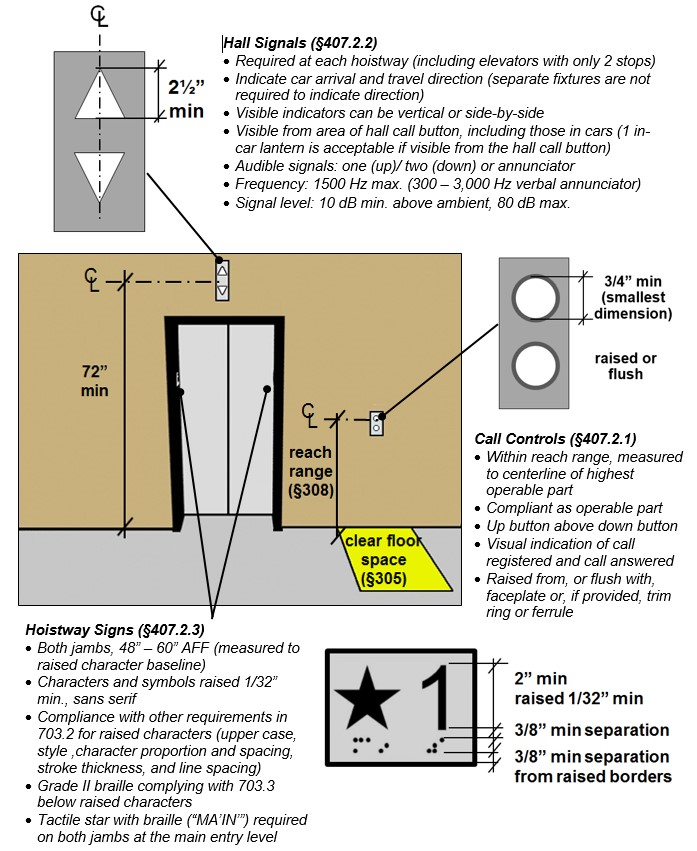
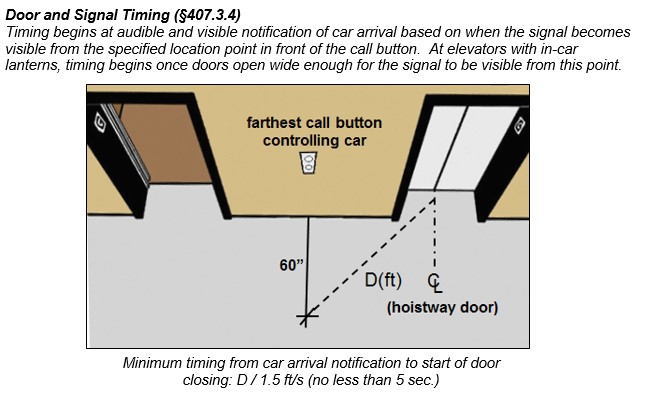
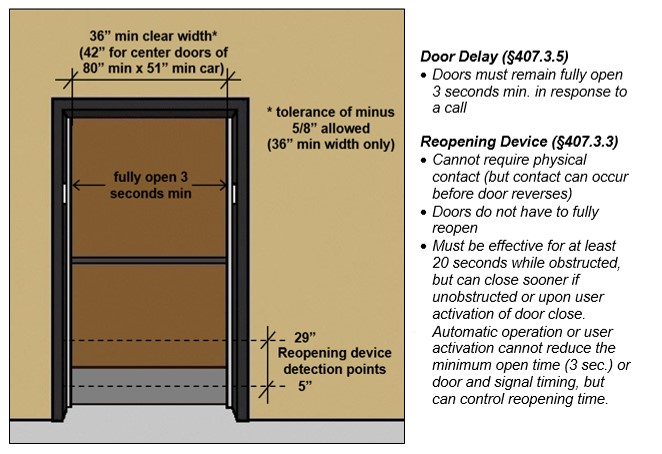
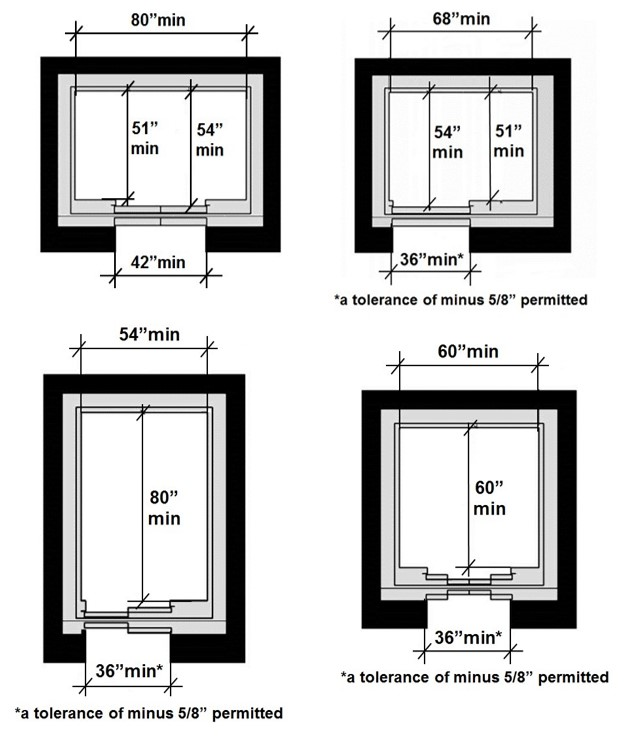
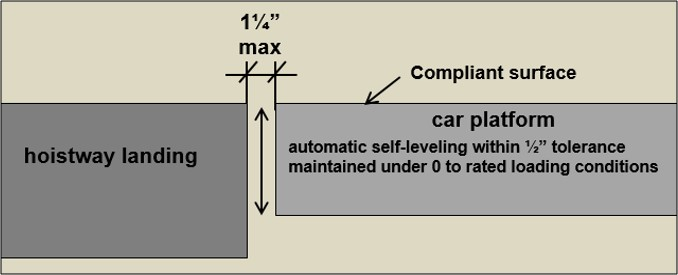
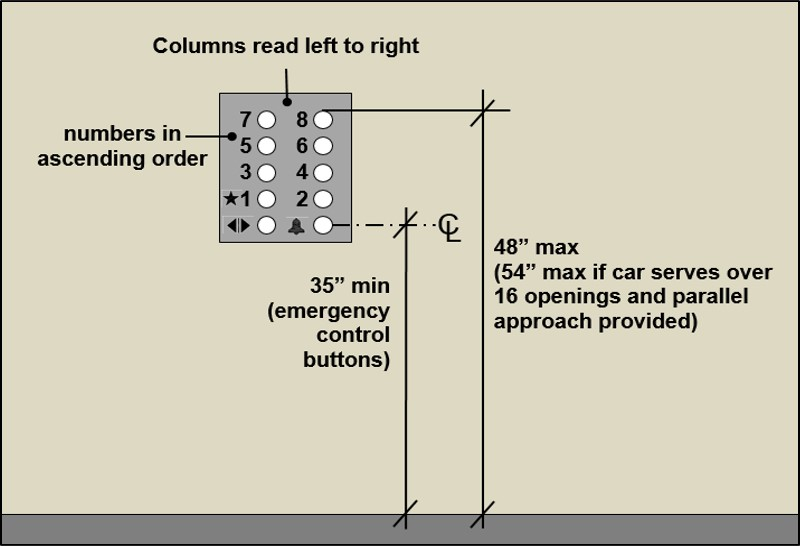
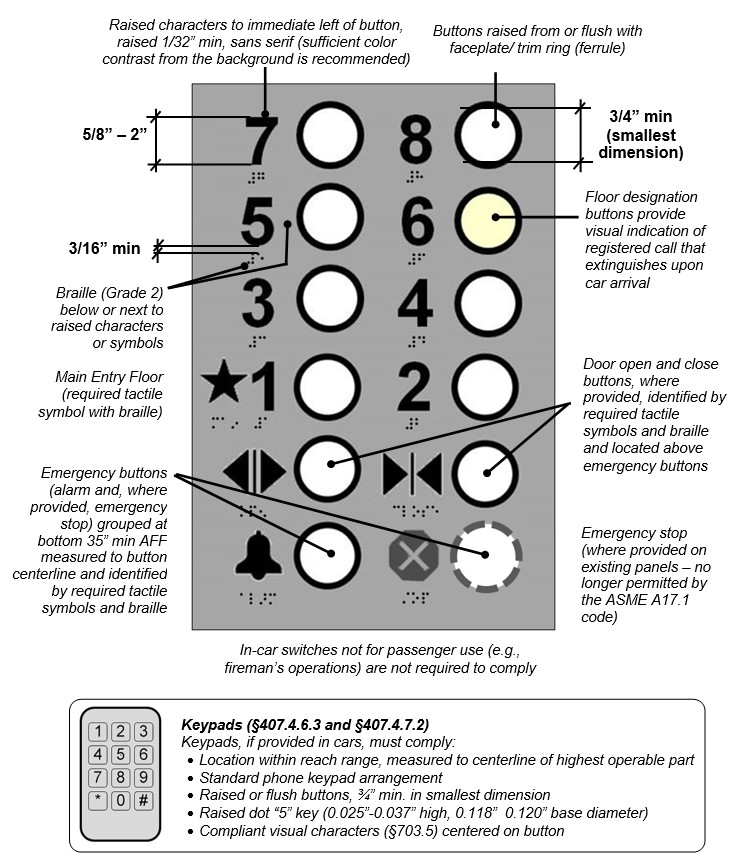
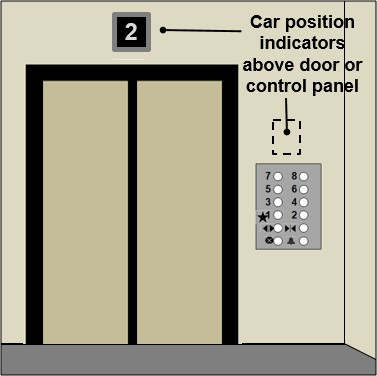
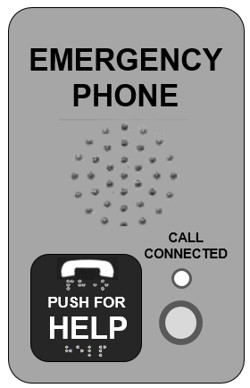
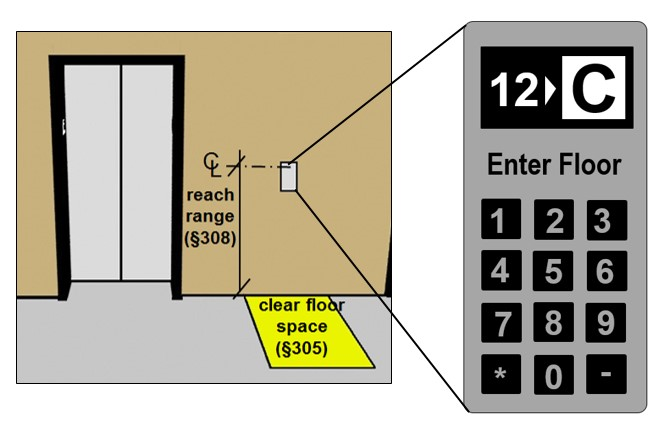
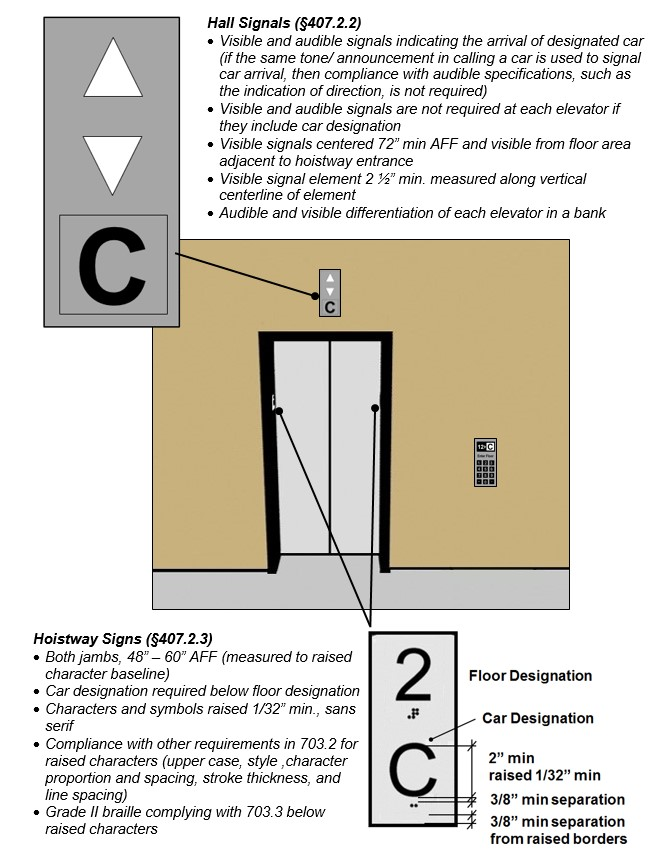

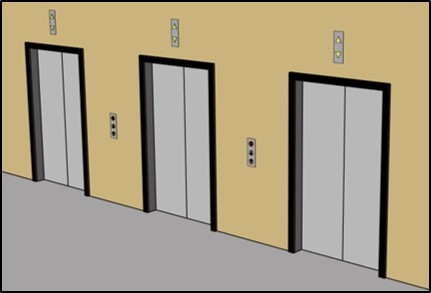
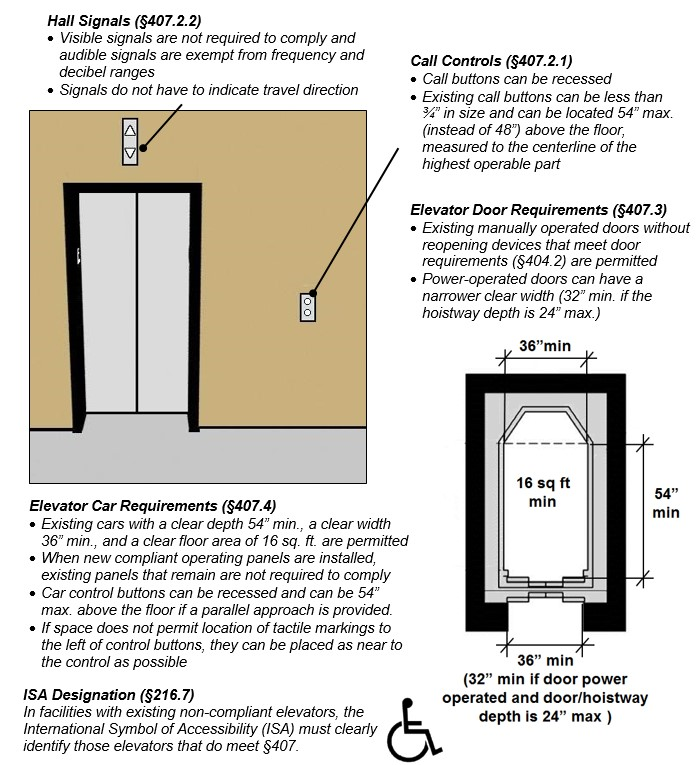

User Comments/Questions
Add Comment/Question